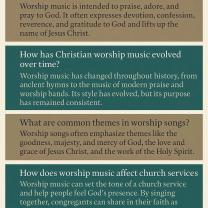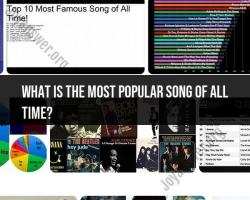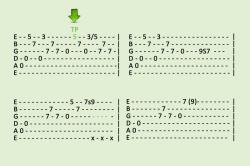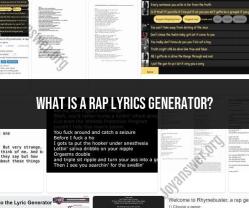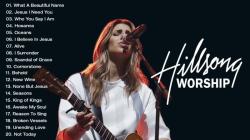How do you use guitar tabs?
Using guitar tabs is a great way to learn and play music on the guitar. Guitar tablature, or tabs, provides a visual representation of the guitar neck and strings, allowing you to see where to place your fingers to play specific notes or chords. Here's a basic guide on how to read and use guitar tabs:
Basic Components of Guitar Tabs:
Lines:
- Each line represents a string on the guitar.
- The top line is the highest-pitched string (usually the high E string), and the bottom line is the lowest-pitched string (usually the low E string).
Numbers:
- Numbers on the lines indicate which fret to press down on.
- '0' means an open string (played without pressing any fret).
- 'X' may indicate that the string is not played or is muted.
Rhythm Notation:
- Tabs don't always show rhythm. The spacing between the numbers gives a rough idea of timing, but for precise rhythm, you may need to listen to the song or refer to sheet music.
Reading Guitar Tabs:
Single Notes:
- A single number on a line indicates a single note to be played on that string and fret.
- For example, "3" on the high E string means to press down the third fret on the high E string.
Chords:
- Multiple numbers stacked vertically indicate a chord.
- For example, "320033" indicates a common C major chord.
Slides, Bends, and Pull-offs:
- / or \ indicates a slide up or down.
- b indicates a bend.
- p indicates a pull-off.
Hammer-ons:
- An "h" between two numbers indicates a hammer-on. For example, "5h7" means play the 5th fret and then hammer-on to the 7th fret.
Tips for Using Guitar Tabs:
Listen to the Song:
- Tabs alone might not capture nuances like bends, slides, or strumming patterns. Listening to the song helps you understand these details.
Combine Tabs with Sheet Music:
- Using tabs along with standard notation or sheet music can give you a more complete understanding of the piece.
Practice Gradually:
- Start with simpler songs and gradually move on to more complex pieces as you become more comfortable with reading tabs.
Use Tab Software or Apps:
- Software like Guitar Pro or online tab resources can provide interactive tabs, playback features, and more.
Remember that while tabs are a useful tool, they might not always be 100% accurate, and personal interpretation plays a role in playing music. Use your ears and feel free to make adjustments based on what sounds right to you.
What is the structure of guitar tabs?
Guitar tablature, also known as "tabs" or "tablature," is a simplified form of music notation that uses numbers to represent the frets on a guitar neck. The structure of guitar tabs typically consists of six horizontal lines, each representing a string on the guitar. The numbers on the lines indicate which fret to press down on that string to produce the desired note. For example, a "3" on the third line would mean to press down on the third fret of the third string.
Guitar tabs often include additional symbols and markings to convey additional information about the music, such as:
Note duration: Symbols like "o" (whole note), "d" (half note), "q" (quarter note), etc., indicate how long to hold each note.
Strumming patterns: Symbols like "U" (upstroke), "D" (downstroke), and ">" (strumming across multiple strings) indicate the strumming pattern for the song.
Bending notes: A small upward arrow indicates a note bend, where the pitch of the note is raised by pressing down on the string and then quickly lifting it off.
Slides: A horizontal line connecting two frets indicates a slide, where the finger is moved from one fret to another while the note is sustained.
How do you interpret guitar tabs?
To interpret guitar tabs, you'll need a basic understanding of guitar anatomy and how to read the fretboard. Here's a step-by-step guide:
Identify the strings: The top line of the tablature represents the thinnest string (E) on the guitar, and the bottom line represents the thickest string (E).
Locate the fret numbers: The numbers on the lines represent the frets on the guitar neck. A "0" means to play the open string, without pressing down on any frets.
Strum the correct notes: Pay attention to the strumming symbols to determine which direction to strum and which strings to play.
Follow additional markings: Apply any additional markings, such as note durations, bends, or slides, to enhance your playing.
Practice and adjust: Start slowly and gradually increase your tempo as you become more comfortable with the song. Adjust your finger placement and strumming patterns as needed.
Are there symbols commonly used in guitar tabs?
Yes, there are several common symbols used in guitar tabs to convey additional information about the music. Here are some of the most frequently used symbols:
Strumming symbols:
- U - Upstroke
- D - Downstroke
- Strumming across multiple strings
Note duration symbols:
- o - Whole note
- d - Half note
- q - Quarter note
- e - Eighth note
- s - Sixteenth note
Other markings:
- h - Hammer-on: Quickly pressing down on a fret without picking the string
- p - Pull-off: Quickly lifting off a fret without picking the string
- b - Bend: Raising the pitch of a note by pressing down on the string and then quickly lifting it off
- / - Slide: Moving the finger from one fret to another while the note is sustained
How do guitar tabs differ from sheet music?
Guitar tabs and sheet music are two different ways of representing music notation. While both methods can be used to learn and play songs, they have distinct characteristics:
Guitar tabs are simpler to read and interpret: They use numbers instead of notes and symbols, making them easier to understand for beginners.
Sheet music provides more detailed information: It includes specific note pitches, rhythms, and chord structures, offering a more comprehensive understanding of the music.
Guitar tabs are focused on guitar-specific techniques: They emphasize fret positions, string strumming, and guitar-specific markings.
Sheet music is applicable to various instruments: It can be used for piano, violin, flute, and other instruments, providing a broader musical understanding.
Where can I find tutorials on using guitar tabs for beginners?
There are numerous resources available online and in libraries that provide tutorials on using guitar tabs for beginners. Here are a few suggestions:
Online guitar lesson websites: Websites like JustinGuitar, Guitar Tricks, and Marty Music offer a wealth of beginner-friendly guitar lessons, including tutorials on reading and using guitar tabs.
YouTube guitar channels: Popular YouTube channels like Andy Guitar, GuitarLessons365, and Marty Music have a vast collection of guitar lesson videos, many of which cover guitar tab basics.
Guitar tab books: There are numerous guitar tab books available that include beginner-friendly songs and tutorials on reading and using guitar tabs.


